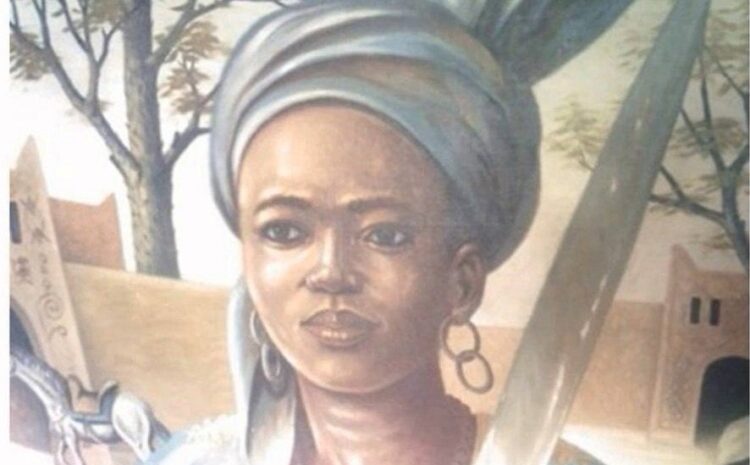Queen Amina was a warrior
and ruler of Zaria, a Hausa city-state in what is now Northern Nigeria. She ruled for 34 years from 1576 until she died in 1610.
Around 1533, Queen Amina was born as Aminatu, a royal family member. Her grandfather was King Sarkin of Nohir, and her grandmother’s name was Marka. Her father was King Nikatau of Zazzau, and her mother was Queen Bakwa Turunku. Amina was the eldest of three children. She had a brother named Karama and a sister named Zaria.
Amina attended an official state business meeting while sitting on her grandfather’s lap. She was caught by her grandmother wielding a dagger when she was a child, which indicated her natural abilities as a warrior. Although she was required to participate in daily activities with her mother as a young woman, Amina also trained vigorously with the royal guard. She was 16 when her mother became queen and named her Magajiya, or heir apparent to the throne. Suitors lined up daily, bringing gifts, including offers of 10 Makama slaves. It is recorded that the Emir of Kano offered her 50 bags of white and blue cloth, 50 female slaves, and 50 male slaves, but Amina refused to marry or have children.
Her parents died in 1566, and her brother, Karama was named the King of Zazzau through tradition. During Karama’s reign, Amina became the lead warrior of the kingdom’s army. For ten years, her successes across the region gained her a fierce reputation and personal wealth outside of her royal family connection.
In 1576, Amina was crowned Queen of Zaria after her brother’s death. In her efforts to provide safe passage for Hausu traders, she expanded the kingdom’s borders through a series of successful strategic battles within three months of her taking the throne. Her military innovations included introducing protective armour to the Zazzau Army. Queen Amina personally led her army of 20 000 soldiers, conquering towns to the north and south in the Nupe and Jukun kingdoms and through Kasashen Bauchi, a region located in what is now known as the middle belt of Nigeria. During her reign, Zaria dominated trade routes connecting western Sudan with Egypt to the northeast and Mali to the north.
In the custom of the era and region, Queen Amina collected tributes from conquered cities and regions, including kola nuts and male slaves. Although she did not begin the practice, Amina built walls around conquered cities and her military camps in conquered regions. Many of those walls still stand in contemporary northern Nigeria. They are known locally as the ‘ganuwar of Amina’, which in the Hausa language means Amina’s walls.
Queen Amina reigned for 34 years. She died in battle in Altagara, near Bida, in 1610 at the age of 77. In contemporary Nigeria, she is known as ‘Amina, rana de Yar Bakwa ta San’ – Amina, daughter of Nikatau, a woman as capable as a man.
There is a government secondary school in Kaduna named Queen Amina College, and female housing dormitories called Queen Amina Hall exist at the University of Lagos and Ahmadu Bello University. A statue is also dedicated to her legacy at the National Arts Theatre in Lagos State.
Source: blackpast.com




